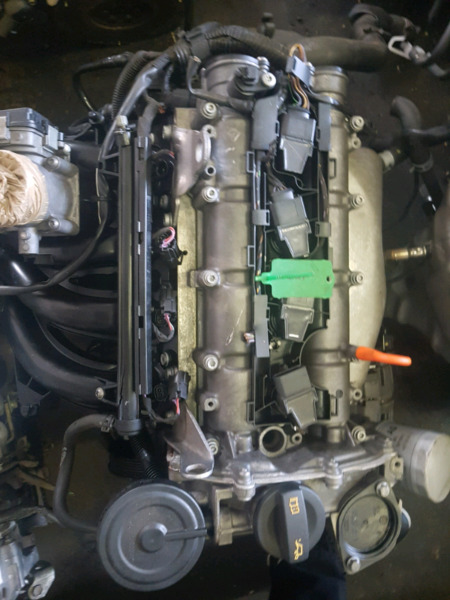How a Clp Engine Can Enhance Efficiency in Numerous Industries
The introduction of CLP engines notes a considerable change in operational effectiveness across numerous industries, driven by their capacity to enhance gas consumption and lessen downtime. Industries such as manufacturing and logistics stand to get considerably from their durable design and constant power result, which promise to simplify operations and improve performance. As organizations progressively focus on sustainability alongside effectiveness, the duty of CLP engines becomes also extra vital. What continues to be to be seen is how these improvements will form the future landscape of commercial operations and their effect on wider financial trends (clp engine).
Introduction of CLP Engines
CLP engines, or Constant Liquid Propellant engines, stand for a substantial improvement in propulsion innovation, particularly for room applications. These engines make use of a constant feed system that allows for the continual expulsion of propellant, bring about improved efficiency and efficiency contrasted to conventional strong or hybrid propulsion systems. By maintaining a consistent flow of fluid propellant, CLP engines can accomplish much more precise drive control, which is essential for maneuvering spacecraft in different objective scenarios.
The style of CLP engines integrates innovative materials and cutting-edge fuel monitoring systems. clp engine. This leads to reduced weight and enhanced integrity, necessary factors for long-duration room missions. In addition, the constant procedure reduces the threat of burning instability, a typical obstacle in conventional rocket engines.

Benefits in Production
The manufacturing of Constant Liquid Propellant (CLP) engines presents several remarkable benefits that improve both effectiveness and cost-effectiveness. One of the primary benefits is the streamlined production procedure, which lowers the intricacy related to conventional propulsion systems. By utilizing fluid propellant, makers can accomplish greater precision in engine efficiency, causing enhanced energy result and minimized waste.
Furthermore, CLP engines help with a greater level of modularity, allowing for less complicated integration into various manufacturing lines. This adaptability can dramatically reduce lead times and enhance total operational versatility. Using CLP modern technology likewise tends to decrease the requirement for extensive upkeep as a result of fewer relocating components, which translates right into decreased downtime and functional expenses.

Applications in Logistics
Leveraging Continual Fluid Propellant (CLP) engines in logistics supplies substantial benefits in functional effectiveness and dependability. These engines supply a durable option for different transport requirements, allowing the seamless movement of goods across huge distances. The intrinsic style of CLP engines enables consistent power output, which translates right into smoother and a lot more foreseeable transportation schedules.
Among the crucial applications of CLP engines in logistics is in heavy-duty freight transportation, where they can drive both ground and airborne cars. Their ability to keep high efficiency under differing lots problems makes certain that shipment timelines are met, thereby boosting client fulfillment. Furthermore, CLP engines can be integrated right into automated logistics systems, promoting real-time monitoring and optimizing path planning.
In addition, the resilience of CLP engines decreases maintenance downtime, enabling logistics business to maximize their functional capabilities. This is specifically helpful in warehousing operations, where performance in managing and transferring items is vital. As logistics remains to advance, the combination of CLP engines stands for a forward-thinking strategy that not just enhances efficiency yet likewise sustains the industry's expanding needs for dependability and speed.
Influence On Energy Effectiveness
How do Constant Fluid Propellant (CLP) engines enhance energy efficiency in transportation? CLP engines use a consistent flow of fluid gas, optimizing combustion procedures and maintaining a steady drive result. website here This style decreases energy losses related to typical combustion engines, where fuel distribution can differ and lead to ineffectiveness.
The continual procedure of CLP engines permits a much more effective thermal cycle, causing higher particular impulse compared to traditional engines. clp engine. this link This converts to lowered fuel consumption for the exact same amount of work done, considerably reducing operational costs throughout different transportation markets, consisting of aeronautics and maritime sectors
Moreover, the ability of CLP engines to preserve ideal performance under varying tons conditions lowers the need for frequent acceleration and slowdown, further enhancing gas performance. Boosted power performance not just adds to cost savings but likewise causes reduce greenhouse gas discharges, lining up with worldwide sustainability goals.
Future Trends and Innovations
Emerging advancements in Continuous Liquid Propellant (CLP) engine technology promise to revolutionize the landscape of transport effectiveness and sustainability. As markets pivot toward greener alternatives, CLP engines stand at the center, incorporating innovative products and style approaches that enhance performance while lessening environmental impact.
Among one of the most appealing trends is the fostering of hybrid systems that incorporate CLP engines with sustainable energy sources. This harmony can optimize gas intake and minimize emissions, lining up with global sustainability objectives. Advancements in computational fluid characteristics (CFD) are helping with the layout of more aerodynamically reliable engines, leading to decreased drag and boosted fuel performance.
Additionally, the growth of smart tracking systems is set to improve functional effectiveness. These systems utilize data analytics and IoT innovation to optimize engine performance in real-time, making certain that the engines operate within their most effective criteria.
As study remains find out this here to explore alternate propellant solutions-- such as biofuels and synthetic fuels-- the future of CLP engines looks encouraging. By harnessing these advancements, sectors can not only improve their effectiveness but also contribute dramatically to a cleaner, more sustainable future in transport.
Verdict
Finally, CLP engines represent a considerable innovation in efficiency across several sectors. Their capacity to maximize fuel consumption and decrease operational expenses, integrated with a continual feed system, boosts power result and functional integrity. The assimilation of advanced materials and fewer moving components minimizes maintenance requirements, while alignment with sustainability goals positions CLP engines as a crucial modern technology for the future. Proceeded innovation in this area assures more renovations in performance and ecological efficiency.